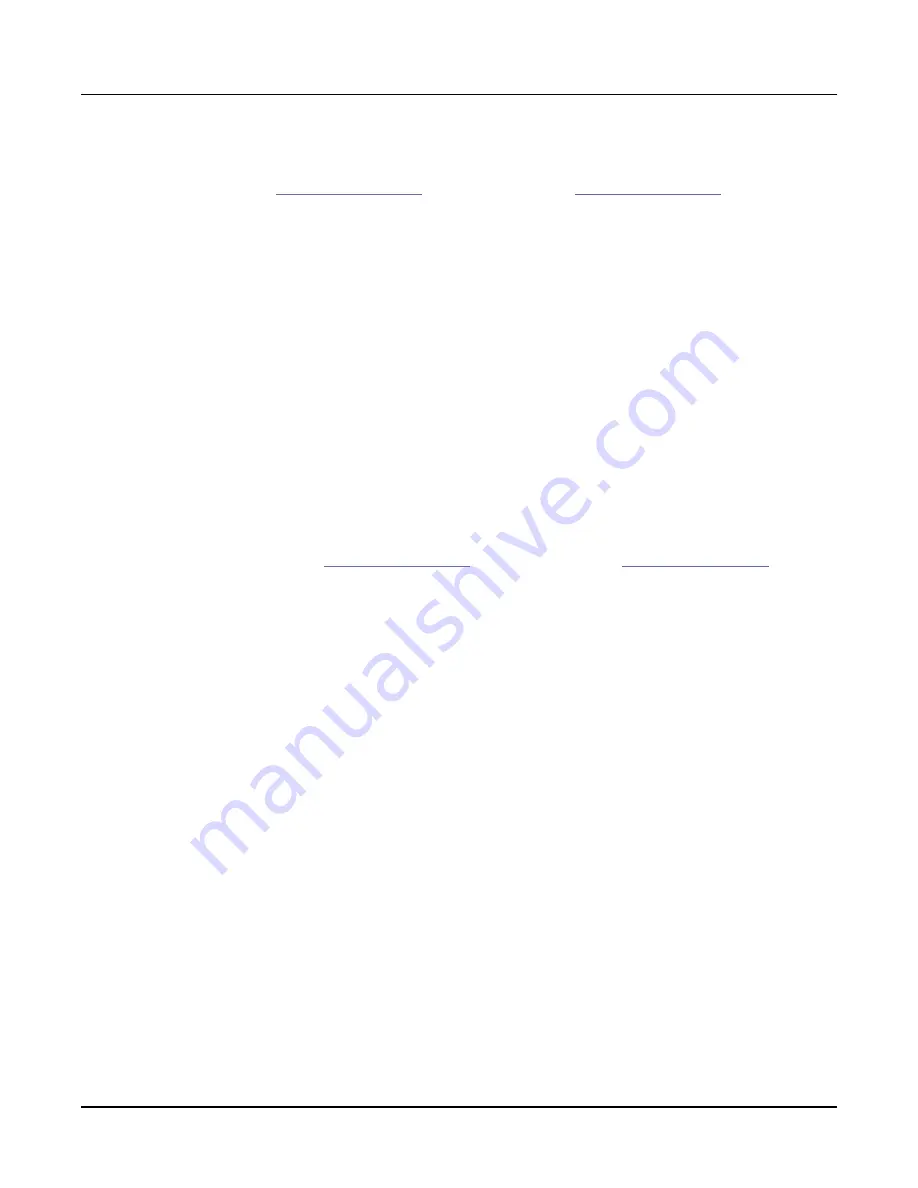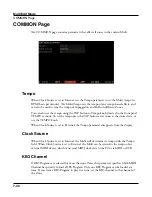
Multi Edit Mode
RIFF Page
7-36
With Trigger SyncType set to Loop, if there is already a riff or song playing to sync to, the
current riff will wait for the playing riff or song to restart its loop (if Loop is set to On) before
starting (see
for looping riffs, and
for looping
songs). This way you can trigger the riff to start ahead of time, and have it start in sync at the
start of the playing riff or song’s loop.
With Trigger SyncType set to Stop, if there is already something playing to sync to, the
current riff will wait for what is playing to stop before starting. This way you can trigger
the riff to start ahead of time, and have it start in sync at the release (stopping) of the riff,
arpeggiator, or song that you are syncing to.
With Trigger SyncType set to Start Wait, if there is nothing playing to sync to, the current
riff will wait for something it can sync to begin playing first before starting. This is similar
to Down Beat Wait, but it will only trigger the riff the first time that whatever it is syncing
to starts. This way you can trigger the riff to start ahead of time, and have it start in sync at
the start of the riff, arpeggiator, or song that you are syncing to. If you stop the riff and try
to start it again while the thing you are syncing to is already playing, Start Wait will not start
the riff.
With Trigger SyncType set to Loop Wait, if there is already a riff or song playing to sync to,
the current riff will wait for the playing riff or song to restart its loop (if Loop is set to On)
before starting (see
looping songs). This way you can trigger the riff to start ahead of time, and have it start in
sync at the start of the playing riff or song’s loop. The difference from Loop is that if there is
nothing playing to sync to, the riff will not start. If the riff or song that you are syncing to is
already running, Loop Wait behaves just like Loop.
With Trigger SyncType set to Stop Wait, if there is already something playing to sync to,
the current riff will wait for what is playing to stop before starting. This way you can trigger
the riff to start ahead of time, and have it start in sync at the release (stopping) of the riff,
arpeggiator, or song that you are syncing to. The difference from Stop is that if there is
nothing playing to sync to, the riff will not start. This can be useful if you want to get your
riff ready to sync before you start whatever you are syncing it to. If the riff or song that you
are syncing to is already running, Stop Wait behaves just like Stop.
Release SyncZone
Release SyncZone has the same settings available as Trigger SyncZone, but Release SyncZone
determines what the releasing (stopping) of the current riff will be synced to when a
parameter other than None is selected for Release SyncType.
Release SyncType
Release SyncType has the same settings available as Trigger SyncType, but Release SyncType
determines how the releasing (stopping) of the current riff will be synced to other riffs,
arpeggiators, and Songs (in combination with the Release SyncZone parameter).
Содержание Flash Play PC4
Страница 1: ... It s the sound Part Number 910587 002 Rev B ...
Страница 9: ... ix MIDI Implementation A 1 Specifications B 1 Index I 1 ...
Страница 289: ... 8 40 ...
Страница 328: ... 10 7 ...
















































